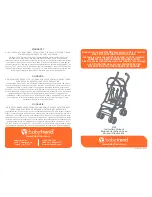
7
Startup and Operation
7.1
Determining the Operating Parameters
Limiting factors for the operation of the piezo actuator:
■
Resonant frequency:
The operating frequency may not exceed one third of the resonant frequency of the
loaded piezo actuator. See
"Calculating the Maximum Operating Frequency of the Loaded
.
■
push/pull force capacity (p. 28)
The mass of the load to be moved and the operating frequency of the piezo actuator must
be selected so that any dynamic forces generated during operation do not exceed the
maximum push/pull force capacity of the piezo actuator. See
Occur During Dynamic Operation" (p. 19)
■
Maximum permissible
operating temperature of the piezo actuator (p. 29)
:
The greater the operating frequency, the operating voltage (peak-to-peak), and the
capacitance of the piezo actuator, the greater the thermal power generated in the piezo
actuator. The operating frequency, operating voltage and operating time must be selected
so that the maximum permissible operating temperature of the piezo actuator is not
exceeded. For the maximum permissible operating frequency without cooling, see
column B of the table in
Peak and average output current of the electronics:
for operating the P-843 must meet the following requirements:
■
The electronics can provide the required current. See
"Calculating the Power Requirement
for Sinusoidal Operation" (p. 19)
.
■
The output current of the electronics does not exceed the maximum power consumption
of the piezo actuator. See
.
7.1.1
Calculating the Effective Mass
Figure 6: Calculation of the effective mass of a unilaterally clamped piezo stack actuator
without load (left) and with additional load (right).
1. Find the mass m of your piezo actuator in the
2. Determine the additional load M.
7 STARTUP AND OPERATION
P843M0001EN
‒
2/23/2021
18
M O T I O N | P O S I T I O N I N G
















































